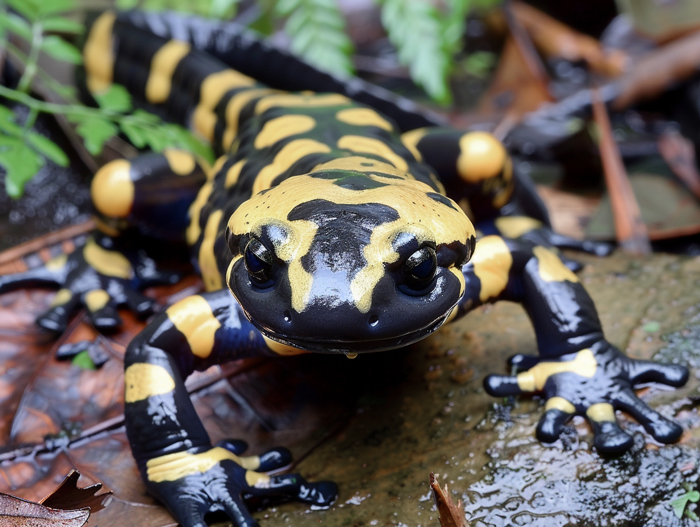Are tiger salamanders poisonous? If you’ve ever come across one of these fascinating creatures, you might have wondered about their toxicity. In this text, we’ll explore the truth behind tiger salamanders and whether they pose any danger to humans or other animals.
Tiger salamanders are known for their vibrant colors and unique patterns, but are these markings a warning sign of their toxicity? Understanding the potential risks associated with these amphibians is crucial, especially if you encounter them in the wild or as pets. Let’s investigate into the science behind tiger salamanders and separate fact from fiction when it comes to their poisonous nature.
Key Takeaways
- Tiger salamanders possess toxic skin secretions that can cause skin irritation or harm if ingested or in contact with mucous membranes.
- These amphibians use defense mechanisms like camouflage, curling up, hissing, or releasing a noxious odor when threatened.
- While not venomous, tiger salamanders’ skin secretions can lead to irritation if they come into contact with the eyes, nose, or mouth.
- It is advisable to wear protective gloves when handling tiger salamanders and to wash any exposed skin thoroughly after contact.
What are Tiger Salamanders?

Physical Features
- Tiger salamanders are large, robust amphibians with distinctive color patterns.
- They typically have black bodies with bold yellow or orange stripes.
- Varied in size, they can range from six to fourteen inches in length.
- Often possessing wide heads with blunt snouts.
- Powerful legs ideal for swimming and burrowing.
- Found throughout North America, from southern Canada to northern Mexico.
- Inhabit a range of environments, including forests, grasslands, and wetlands.
- Prefer to dwell in moist areas, such as under rocks or logs near water sources.
- Lay their eggs in temporary pools or ponds.
Tiger salamanders are fascinating creatures with unique characteristics that adapt them well to their diverse habitats.
Poisonous Properties
Tiger salamanders possess Toxic Skin Secretions that serve as a defense mechanism against predators. These secretions contain compounds that can cause irritation or harm if ingested or in contact with mucous membranes. Be cautious when handling these amphibians, especially if you have sensitive skin.

Toxic Skin Secretions
- Tiger salamanders secrete toxins through their skin glands for protection.
- Contact with these toxins can cause skin irritation or more severe reactions.
- Avoid direct contact with their skin and wash your hands thoroughly after handling them.
- Tiger salamanders use camouflage to blend in with their surroundings and avoid detection.
- When threatened, they can exhibit behaviors like curling up, hissing, or releasing a noxious odor to deter predators.
- These defense mechanisms help them survive in the wild and navigate their habitats effectively.
Interaction with Humans

Potential Risks
- Tiger salamanders are not venomous, but their toxic skin secretions can cause irritation if in contact with the eyes, nose, or mouth.
- Avoid direct handling of tiger salamanders, especially if you have sensitive skin.
- Allergic reactions may occur in some individuals upon contact with the salamander’s skin secretions.
- When handling tiger salamanders, it’s recommended to wear protective gloves to prevent skin contact.
- If you come in contact with the salamander’s secretions, wash the affected area thoroughly with soap and water.
- Do not touch your face or rub your eyes after handling a tiger salamander.
Conclusion
Handling tiger salamanders requires caution due to their toxic skin secretions, which can cause irritation and allergic reactions. It’s crucial to avoid direct contact, especially if you have sensitive skin. Wearing protective gloves is recommended to minimize the risks associated with handling these amphibians. If exposure, thorough washing with soap and water is essential to prevent any adverse effects. Remember not to touch your face or rub your eyes after interacting with a tiger salamander. Stay safe and informed when dealing with these fascinating creatures to enjoy their presence without any unwanted consequences.

Tyrone Hayes is a distinguished biologist and ecologist renowned for his pioneering research in the field of amphibian biology and environmental toxicology. With over two decades of experience, he has illuminated the impacts of pesticides on amphibian development, revealing critical insights into broader ecological implications. Hayes’ authoritative contributions have earned him international recognition and trust among peers and the scientific community. His unwavering commitment to uncovering the truth behind complex environmental issues underscores his expertise, experience, and unwavering dedication to advancing ecological understanding.
